Overview of the Snow White cypress variety
The name of the variety "Snow White" literally means "Snow White". The needles of this graceful plant are yellow-green with light highlights.
Lawson's cypress "Snow White" is an evergreen tree or shrub with a columnar crown and slow growth. "Snow White" is ideal for growing in tubs, small gardens, rockeries.
What is this grade
Popular in landscape design, the Snow White variety is derived from Lawson's cypress, which was exported 170 years ago from North America to Scotland. In their homeland, in natural conditions, trees of this species reach a height of 15 to 80 m.
Outwardly, "Snow White" resembles cypress and thuja, it differs from the first in flatter branches, small cones with 2 seeds on each scale. The difference between cypress and thuja lies in the shape of the top and the structure of the cones. Plants of the genus Chamaecyparis are called false cypresses to distinguish them from "real" cypresses.
Description and characteristics
Cypress trees with limited growth have been in high demand in recent years, including the Snow White dwarf cypress variety Lawson. The Latin name is Chamaecyparis lawsoniana "Snow White".
Description of the variety "Snow White":
- An upright coniferous tree (one trunk) or shrub (several trunks).
- It grows slowly, reaching a height of 0.8–1 m.
- The annual growth is from 5 to 10 cm.
- The maximum height at the age of 10 is from 1.5 to 2 m.
- Crown shape - columnar, cone or drop.
- The diameter of the crown is from 40 to 60 cm.
- The main color of the needles is gray-green.
- The tips are creamy white.
The variety is adapted to the temperate continental climate of Europe. The plant is frost-resistant, easy to care for, tolerates pruning well.
What it looks like, how it blooms
Snow White cypress is a bonsai or shrub. The crown is dense. The bark on the trunk is dark red or brown, separated by stripes. Scaly leaves enchant with their openwork pattern. The needles are short, dense, soft to the touch. The main color is gray-green or blue-green. Shoot tips are light (lemon white or light cream).
In March – April, red or purple cones appear among the openwork needles. Ripe cones of a dark brown color open, the seeds spill out.
Favorable growing conditions
Snow White cypress prefers a sunny or partially shaded position, fresh, permeable, humus-rich soil. The optimum soil pH is from 5 to 6 (slightly acidic and neutral soil).
This dwarf false cypress is ideal for growing in a tub. Gardeners and florists should choose the substrate more carefully. It must be remembered that in an enclosed space, moisture and nutrients are lost faster.
Temperature
Garden cypress "Snow White" is hardy in temperate climates, has good frost resistance. According to some sources, the variety tolerates temperatures not lower than –15 ° С, according to others, it does not freeze at –28 ° С. A combination of low temperature, strong wind and snowfall can be dangerous for the plant.
Shine
The optimal location in the Snow White cypress garden is a sunny or partially shaded area, sheltered from the wind. Indoors, on the loggia and on the terrace, it is better to place a tub with a bonsai in a well-lit place. "Snow White" tolerates shade, but the lemon-yellow color of the needles is less pronounced with a lack of light.In the long term, shading leads to inhibition of growth and rapid death of the plant.
When exposed to the sun, remember that direct rays can cause burns to the needles. In addition, the soil becomes overdried, which is harmful to the superficial root system of a young cypress tree.
Humidity
The needs of plants of the "Snow White" variety in water are average. At a young age, more moisture is required. Watering should be regular, but without waterlogging the soil. Well-rooted trees are easier to tolerate short periods of drought. The need for water is higher during hot and dry seasons, as well as for plants in tubs.
On a note! When the earthen ball is completely dried, the cypress is not restored.
Watered with clean rain or pond water. You can use settled tap water. After watering, it is advisable to mulch the soil around the trunk with dry or fresh grass, chopped bark, sawdust, and peat.
How to grow at home
When grown indoors, the cypress tub should not be placed near heating appliances, in dark corners and in the back of the room. It must be located close to a light source - a window or lighting fixtures. The Snow White variety is successfully grown on open and glazed balconies, loggias, terraces, patios.
Preparation (containers, soil, planting material)
Before planting, choose a pot or tub that is suitable in size. It should be borne in mind that not only the aerial part is increasing in size, but also the root system of the plant. There should be drain holes at the bottom of the container.
Planting instructions
Indoor trees can be planted in flowerpots and containers all year round. However, the plants thrive best if planted in early spring or late summer to mid-October.
Instructions:
- Cover the drainage holes in the container or flowerpot with a layer of expanded clay, washed pebbles or brick chips. Shards from old pottery can be used as drainage material.
- Use a ready-made coniferous growing medium from a flower shop or mix garden soil with humus, peat and sand (2: 1: 1), add 1 tbsp. l. complex mineral fertilizer. Mix well.
- On top of the drainage material, pour a layer of prepared soil with a height of about 1/3 of the container, make a small depression, pour.
- Place the cypress root ball in the middle of the flowerpot in the depression in the soil.
- Fill in the remaining substrate, pressing against the roots, tamp with a spatula.
- Water the cypress.
Advice. Choose a container 2–3 cm wider than the diameter of the plant's root ball.
The Snow White dwarf variety is ideal for potting. Plants can remain in the same large pot for a long time. If the volume of the container is 30-50 liters, then the cypress tree can not be transplanted for 3-4 years.
Further care
In the first weeks after planting or transplanting, more attention should be paid to the evergreen. It is especially important to maintain soil moisture.
Water requirement depends on plant size, temperature and light. The cypress is watered more intensively in the first 6-8 weeks after planting. Water must penetrate to the roots, not just wet the soil surface. If the substrate is loose, well-permeable, then moisture is evenly distributed throughout the earthen coma.
Pruning is done from February to March or August to October. Mature trees tolerate this procedure worse, therefore they begin to form the crown of a cypress from the second year of life. When pruning, about 2/3 of the shoots that are too elongated are removed.
Helpful hints:
- Use a sharp cutting tool, preferably a pruning shears, to remove dead parts of the plant, shorten the shoots that are too elongated.
- Make slices at a distance of 3-5 cm from the kidney.
- Don't cut branches too close to the trunk.
- Wear gloves while working, as the needles give off irritating and toxic essential oils.
- Wipe the tool before and after cutting with alcohol.
- Sprinkle the cuts on the tree with charcoal or ash.
For the cypress to grow well, it is important that there is an even supply of nutrients. If the plant lacks mineral elements, then the crown becomes loose, the color of the needles becomes dull.
The first feeding of cypress is carried out in March – April with a special fertilizer for conifers from a flower shop. This organic-mineral mixture contains all the necessary macro- and microelements, promotes dense growth and natural color of the shoots.
On a note. Plants must be watered before feeding!
Nitrogen in the fertilizer stimulates growth, magnesium prevents brown needles. Organic components maintain the fertility of the substrate at a high level for several months.
Preparation for wintering
Cypress "Snow White" does not tolerate dry warm air in the room; when the heating devices are turned on, they can lose their decorative appearance. It is advisable to place the flowerpot in the coolest and most well-lit room. At temperatures below 15 ° C, water is rarely watered - once a week or 10 days.
If the plants in flowerpots were taken outside in the summer, then it is better to transfer them to the terrace for the winter. The pot is covered with cardboard, burlap to protect the roots from frost. From October to March, the cypress is occasionally watered.
A coniferous tree growing outdoors is susceptible to breaking off under the influence of a layer of snow. Therefore, in regions with a large amount of precipitation in winter, it is advisable to tie the crown with twine, rope. Otherwise, the branches will fall apart under the snow and break.
With a slight frostbite of the tips of the shoots, the cypress is restored. In the spring, it is necessary to cut the damaged parts of the plant to healthy wood.
Features of outdoor cultivation
An ideal site for planting Snow White cypress trees - well lit and protected from cold winds and drafts. You need a well-drained soil with a lot of humus, slightly acidic, well-permeable to water.
Heavy substrates with a tendency to compaction and waterlogging are not suitable for cypress trees. If the soil on the site is heavy, then a mixture consisting of equal parts of leaf and turf soil, sand is poured into the planting hole.
Instructions:
- For large cypress trees, when planting, leave a distance of 3 m between adjacent trees, from trees to the walls of buildings.
- Make the planting hole twice as wide and deeper than the diameter of the root ball.
- On heavy soils, add quartz sand and compost.
- Pour drainage material and part of the prepared soil at the bottom of the planting pit.
- Pour in water.
- Place the tree in the center of the planting hole.
- Fill in the remaining soil, press it to the roots, tamp it gently.
- Water the tree.
- Spread a layer of mulch over the wet soil.
After planting, the trees are watered more often, then the irrigation is reduced. Liquid dressing in the warm season should be applied 2 times a month. Fertilizer is applied for the first time 1-2 months after planting.
In the spring, the trees on the site are carefully cut. The trunks are weeded in time. Newly planted young trees need winter protection. Cover the cypress with burlap or other covering material. Use brushwood, straw. In the spring, winter protection is removed in a timely manner so that mold does not spread when the temperature rises.
Cypress trees are often used to create hedges. It is necessary to dig a trench 30 cm wide and 40 cm deep. When planting, set 3-4 trees per 1 m. Cover the roots with a mixture of garden soil and compost. An evergreen hedge decorates the site, serves as a "shield" for the entry of germs and dust, a "shield" from prying eyes.
Reproduction of the Snow White cypress
In autumn, from October, you can start breeding a coniferous tree by cuttings. A strong shoot is cut into pieces 20–25 cm long. The surface of the cuttings should be lignified.In the lower part of each segment of the shoot, the needles are removed, the bark is removed with a sharp knife, as if a pencil is being sharpened. The cut sites are treated with activated carbon.
On a note. To accelerate the appearance of roots, the cuttings are kept for some time in a growth stimulant solution (sold in a flower shop).
Root shoots in pots with a mixture of peat and sand. Fertilizers are not added. Cover the top with a plastic bag with holes for gas exchange. You can plant 2-3 cuttings in one pot. Not all form roots, so you need a "supply" of material for reproduction.
For better rooting, a temperature of 15 ° C and diffused lighting are required. Different cuttings develop their own root system at different rates. As soon as young shoots appear on the branches, they are planted in the soil (tub or in open ground).
Sowing Snow White cypress seeds is rarely practiced. Germination is low, so the time spent on the procedure does not justify itself. Vegetative propagation by lignified cuttings allows you to easily get enough planting material.
Protection against diseases and pests
Cypress is susceptible to fungal diseases. Phytophthora causes a decrease in the rate of photosynthesis. The needles turn pale, then turn brown and dry out. Spraying with fungicides is necessary.
Scabbard cypress and spider mites damage. If the beginning of the infection is missed, then the pests will cause serious damage to the plant. You can use the chemical agent Actellik, which kills pests and ticks. For 1 liter of water add 1 g of granules of the drug. Processing is carried out outdoors, using protective clothing.
Application in landscape design
Cypress "Snow White" is a welcome inhabitant of rockeries, alpine hills, Japanese stone gardens. Planted singly or in small groups. Combine this bonsai with other conifers or perennial flowering plants. The cypress hedge creates a beautiful framing of the path and flower garden on the site. You can install pots with a bonsai at the front door, near the gazebo.
Suitable partners for the Snow White False Cypress: Junipers, Boxwood, Mahonia Holly. Tulips, daffodils and other bulbous early flowering plants look great against the background of evergreen needles.
Hedges can be created from combinations of Snow White cypress with other coniferous and decorative deciduous trees, shrubs. I use mixed plantings with boxwood, berry yew, glossy loquat.
Advantages and disadvantages of the variety
False cypress "Snow White" is relatively unpretentious and easy to care for. Young shoots of yellow-white color look spectacular against the general background of green needles. The dwarf tree grows slowly, so lovers like to grow conifers indoors. The plant is not very susceptible to diseases and pests.
Cypress "Snow White" is a fertile material for curly haircuts. They give the crown the shape of a ball (brings happiness), a volumetric figure of eight (looks original). Topiary can be made with your own hands, but it is better for a novice gardener to seek help from specialists.
A plant at a young age is more sensitive to poor lighting, drafts, excess and lack of water. Therefore, in the early years, cypress trees need to be given increased attention. Lack of light leads to wilting and death of the needles. Brown color appears when waterlogging, lack of water, its salinity, nutrient deficiency.
The essential oils contained in the Chamaecyparis lawoniana "Snow White" plant are poisonous. The thujone component can cause burns and irritation of the skin and mucous membranes. This should always be considered when handling Snow White, her buds, shoot tips, cuttings and wood.
Testimonials
-
Lydia:
Snow White cypress is good in winter and summer. I bought a plant in a nursery already in a pot.As I was told, this is a technical pot, it needs to be changed at home for a more durable and beautiful flowerpot. The cypress transferred the transshipment without any problems. Now there are young twigs, they are very elegant. "
-
Vladimir:
“In this cypress variety I was attracted by the opportunity to grow both indoors and outdoors. I bought two potted plants. I'll put one on the cool veranda, the other I'll dig in the garden. I'll see where the cypress tree will feel more comfortable. "
-
Karina:
“I was not able to create suitable conditions for the Snow White cypress tree bought in the nursery in winter. The apartment is warm, there was little light from December to February. Therefore, my tree withered a little, young branches almost did not appear. Next winter I will be lighting it up with a lamp. "
Watch the video about cypress trees:



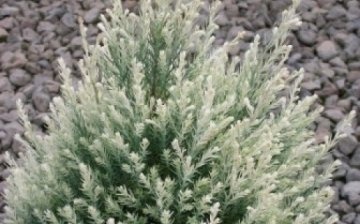

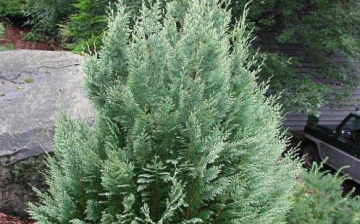



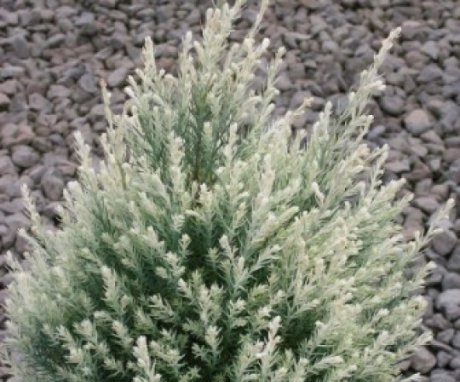
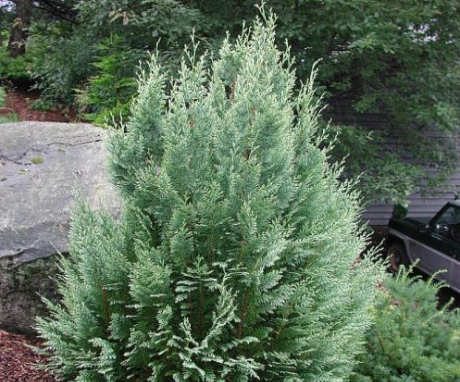
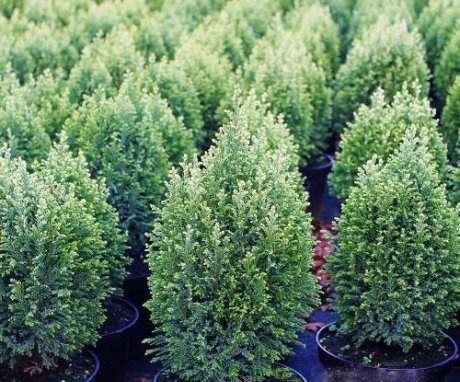
This "snow white" will look very beautiful, as an element of landscape design, on an alpine slide. Another "Snow White", can be used for a hedge, with a dense planting of cypress, in one row.